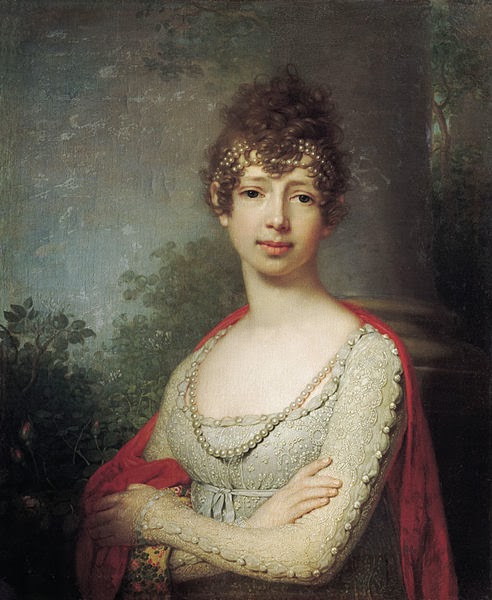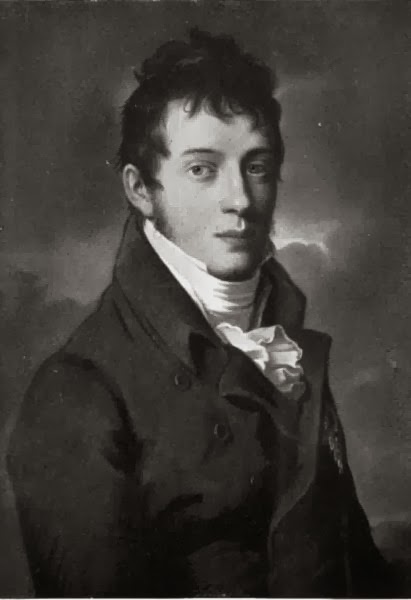 |
| Grand Duchess Maria Pavlovna of Russia vy George Dawe, 1825 |
Today's noble visitor , Maria Pavlovna, was the daughter of Paul I of Russia and his wife, Maria Feodorovna (born Sophie Dorothea of Württemberg). Born into an illustrious dynasty, she could count two Tsars of Russia among her siblings as well as a previous guest at the salon, Anna Pavlovna of Russia.
As a little girl Maria was known for her tomboyish ways, liking nothing more than joining the boys in their games rather than favouring ladylike pursuits. A childhood brush with smallpox resulted in the young girl's face becoming scarred yet she did not allow this to hold back and devoted herself to the study of music under Kapellmeister Giuseppe Sarti and Ludwig-Wilhelm Tepper de Ferguson, proving herself an exemplary pianist.
 |
| Grand Duchess Maria Pavlovna of Russia by Vladimir Borovikovsky |
Intelligent and inquisitive, she gave her consent to her betrothal to Charles Friedrich Hereditary Grand Duke of Saxe-Weimar-Eisenach in at the age of 18 and the couple were introduced in St Petersburg. they spent time getting to know one another and were married on 3rd August. The newlyweds remained in Russia for a year settling into life together and over their long marriage had had four children, three of whom lived to adulthood.
On her much-celebrated arrival in Saxe-Weimar-Eisenach, Maria was shocked at the poor state of her new homeland and devoted herself to culture and philanthropy, putting in place a programme of social welfare and hosting celebrated literary and scientific salons. The people and court took a liking to the new arrival and she threw herself wholeheartedly into philanthropic and cultural activities, beginning a lifelong interest in the welfare of the people of her nation.
 |
| Charles Friedrich, Grand Duke of Saxe-Weimar-Eisenach |
In 1806 Maria was forced to leave Weimar as Napoleon advanced and they fled to Bohemia, where they remained until the Battle of Leipzig. Finally able to return to their territory, the Duke and Duchess participated in the Congress of Vienna and enjoyed significant gains thanks in part to Maria's negotiating skills. In 1828 the death of Grand Duke Carl August saw Maria and her husband finally attain the rank of Grand Duchess and Grand Duke, their court one that celebrated cultural achievement in Weimar.
A devoted mother and wife, Maria retired from public life when she became a widow in 1853 and expressed a wish to be buried beside her late husband at her own death, yet somehow still rest on Russian soil. She returned to her homeland just once in her later years, to attend the 1855 coronation of her nephew, Alexander II of Russia.
Following her death she was buried in the Goethe-Schiller Mausoleum beside the Grand Duke. In accordance with her wishes, the casket was lined with earth brought from Russia and the Grand Duchess was mourned deeply by those who had known her.
Life in the Georgian Court, true tales of 18th century royalty, is available at the links below.

2 comments:
I always enjoy reading your post !! <3
Merci!
Post a Comment